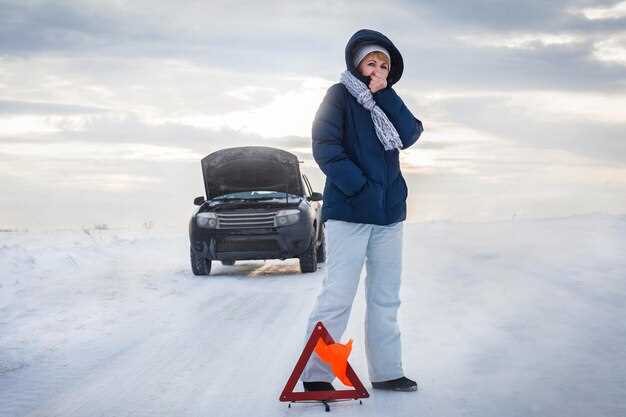
Winter driving presents unique challenges that can significantly impact the safety and performance of your Ford vehicle. Icy roads, reduced visibility, and unpredictable weather patterns require drivers to adjust their habits and make informed decisions. By following essential safety tips, you can ensure that your Ford remains reliable and efficient throughout the winter months.
Understanding your Ford’s winter capabilities is crucial for navigating the harsher conditions. Many Ford models are equipped with advanced features such as all-wheel drive and stability control, which can provide better traction and handling. It’s important to familiarize yourself with these features and ensure they are functioning properly before hitting the road.
In addition to knowing your vehicle, preparation and maintenance are key. Regularly checking your tires for proper inflation and tread depth, inspecting your battery, and ensuring that your windshield wipers are in good condition can help you avoid hazardous situations. Taking the time to winterize your Ford will not only enhance safety but also extend the life of your vehicle.
As you navigate through the winter landscape, always remember to adjust your driving style. Slower speeds, increased following distances, and smoother steering can make a significant difference when it comes to maintaining control on slippery surfaces. By implementing these tips, you can drive your Ford confidently and safely this winter season.
Preparing Your Ford for Winter Weather
When preparing your Ford for winter weather, it is essential to ensure that your vehicle is equipped to handle the challenges of driving in cold conditions. Start with a thorough inspection of your tires. Make sure they have sufficient tread depth and consider switching to winter tires, which provide better traction on snow and ice.
Next, check your battery. Cold temperatures can reduce battery performance, so ensure that it is fully charged and free of corrosion. If your battery is over three years old, consider having it tested to confirm it can still hold a charge effectively.
Inspect your windshield wipers and fluid. Replace worn wiper blades to ensure visibility during winter storms, and fill the washer reservoir with a winter-grade fluid that won’t freeze. This is crucial for maintaining clear sightlines while driving in snowy conditions.
Additionally, review your vehicle’s antifreeze levels and make sure the fluid is mixed appropriately to prevent freezing. This will help protect your engine in extreme cold.
Finally, pack an emergency kit in your Ford. Include items such as blankets, a flashlight, a first aid kit, non-perishable snacks, and a small shovel. Having these supplies can provide peace of mind and safety in case you encounter unexpected situations while driving in winter weather.
Maintaining Control on Icy Roads

Driving your Ford in winter conditions requires specific skills, especially on icy roads. To ensure safety, it’s essential to understand how to maintain control of your vehicle under these challenging circumstances.
Firstly, reduce your speed. Icy surfaces significantly decrease traction, so approaching corners and junctions at a lower speed can help prevent skidding. Always anticipate stops by starting to brake early, allowing for the extra distance needed to come to a halt safely.
Secondly, avoid sudden movements. Abrupt steering, acceleration, or braking can lead to loss of control. Instead, make gradual adjustments, keeping your inputs smooth and steady. This technique helps to maintain the vehicle’s grip on the road.
Equipping your Ford with quality winter tires can dramatically enhance your vehicle’s performance on icy roads. These tires are designed to offer better traction in cold conditions, improving grip and handling. Make sure they are properly inflated and have sufficient tread depth.
In addition, utilizing your vehicle’s anti-lock braking system (ABS) effectively can help maintain control during sudden stops. When you need to brake, apply firm pressure and allow the ABS to modulate the braking force. This prevents the wheels from locking up, aiding in steering while braking.
Lastly, be aware of road conditions. Keep an eye out for patches of ice, especially in shaded areas or on bridges where temperatures can drop unexpectedly. Being proactive about recognizing these hazards will help you react appropriately and maintain control throughout your drive.
Emergency Procedures for Winter Driving

When driving in winter conditions, it’s essential to be prepared for emergencies that may arise due to snow, ice, or severe weather. Knowing how to respond can make a significant difference in ensuring safety.
First, always keep an emergency kit in your Ford, including items such as a flashlight, extra batteries, blankets, non-perishable food, water, and a first-aid kit. These supplies can be lifesavers in the event of becoming stranded.
If your vehicle becomes stuck in snow, stay calm. Avoid spinning the wheels, as this can worsen the situation. Instead, clear snow away from the tires and try to enhance traction using gravel or sand if available. If necessary, it may help to gently rock the vehicle back and forth to gain momentum.
In case of a breakdown, pull off the road as far as possible and turn on your hazard lights. Remain in your vehicle, as it offers protection from the cold and reduces the risk of being hit by other vehicles. If you must exit the vehicle, tie a bright cloth to the antenna or hang it out the window to signal for help.
Another critical procedure involves staying informed about weather conditions and road closures. Use reliable sources, such as local news channels or weather apps, before heading out. If conditions worsen while driving, consider seeking shelter instead of attempting to continue.
Lastly, always inform someone of your travel plans and estimated arrival time. In case of emergencies, this information can assist in locating you more quickly should you encounter trouble on your winter driving journey.



